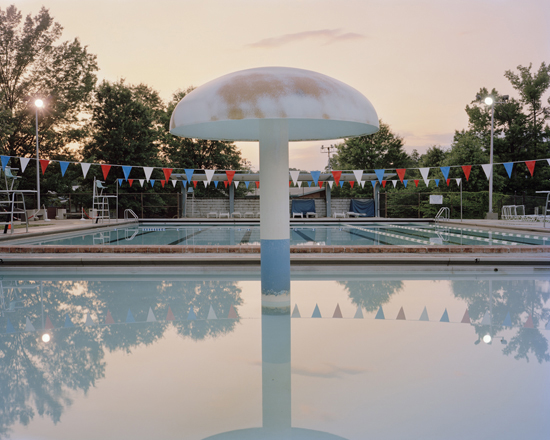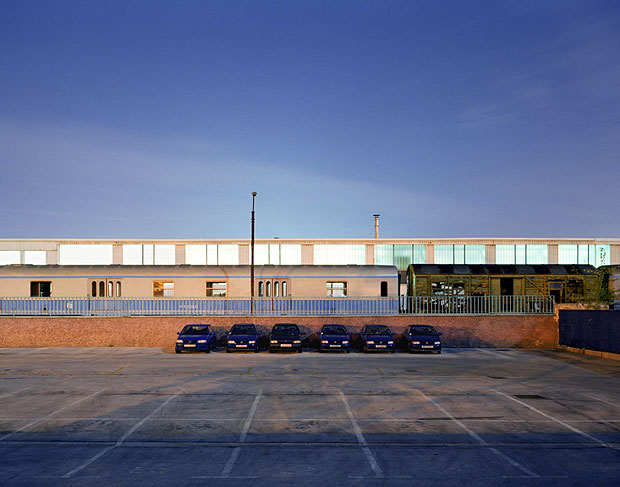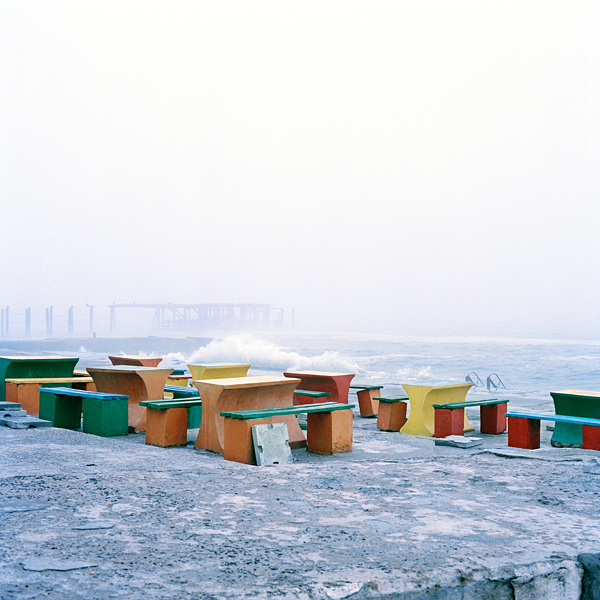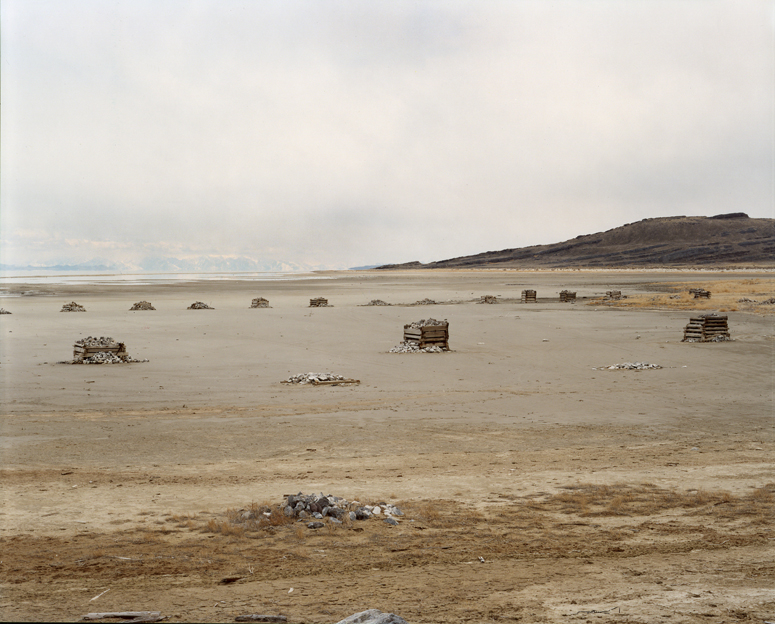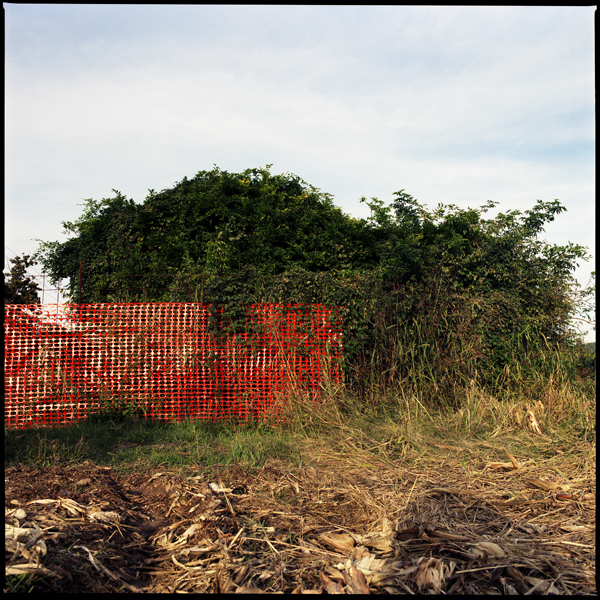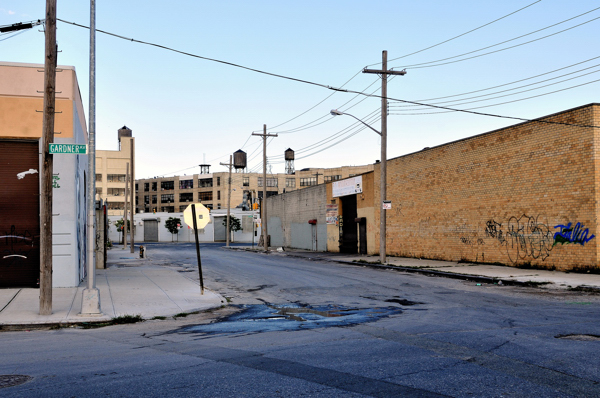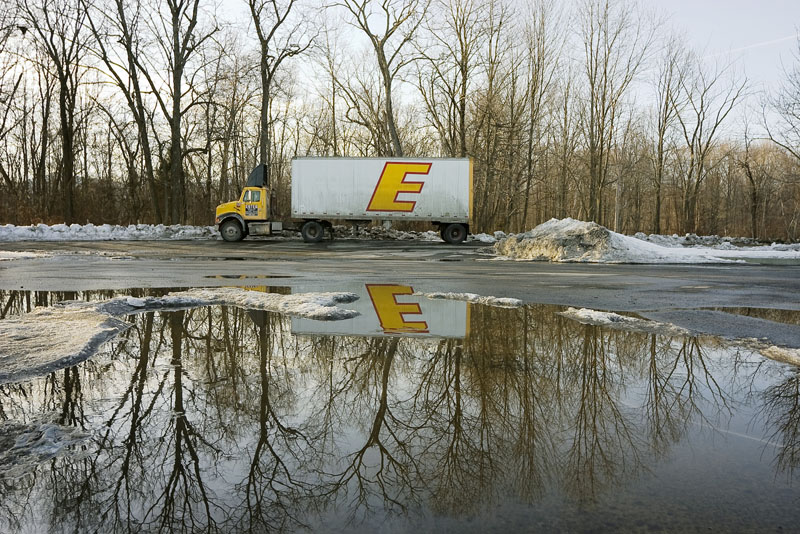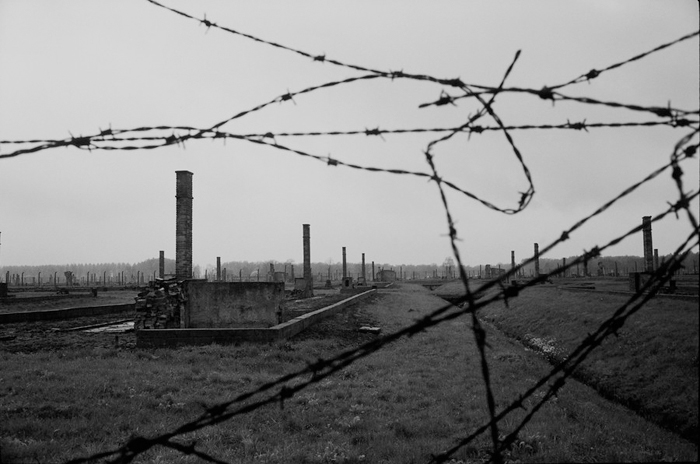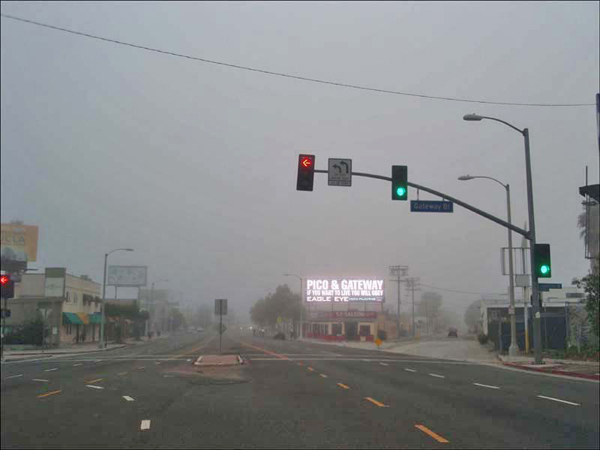
www.Loretta-Ayeroff.Photoshelter.com
This current work is “noirish,” a darker view of my hometown than my previous images presented. I have always been interested in photographing the mundane, the obvious and proletariat vistas of the middle-class.
Upon research, and a Raymond Chandler reading spree, I discovered that I had been living the past three years only blocks away from two Chandler residences.
“Towards Drexel Ave.,” shot from my current studio window, is homage to Mr. and Mrs. Chandler, who lived around the corner during the years 1943-1946.
— Loretta Ayeroff
